

The battle of Midway is considered the decisive battle of the war in the Pacific. Seven months after its stunning victory at Pearl Harbor, the Japanese navy was confident and on the offensive, capturing vast territory throughout Asia and the Pacific. Its plan was to entrap and destroy the U.S. Pacific Fleet, plus capture Midway Island and use it as a base for a possible invasion of Hawaii. In late May 1942, U.S. naval intelligence intercepted coded messages that confirmed Japanese plans of an attack on Midway sometime in early June. Unknown to the Japanese, the United States had broken the code. The aircraft carriers Enterprise and Hornet left Pearl Harbor on May 28 to take up a position northeast of Midway. Two days later, the Yorktown steamed out of Pearl to join them. Five days later, the United States would emerge victorious, and the Japanese navy would never recover from the defeat. While the battle raged from June 4-6, the events of June 4 were the Pacific war's turning point. Miracle at Midway
60 years ago, the battle that abruptly
It was the turning point in the
changed history raged 1,100
miles northwest of Hawaii
Pacific war and served as America's revenge
Graphics by David Swann and Burl Burlingame
dswann@starbulletin.com
bburlingame@starbulletin.com
Star-Bulletin Dauntless

U.S. NAVY
ULTIMATE SACRIFICE: George Gay reads the "Extra" edition of the Star-Bulletin at Pearl Harbor while recovering from wounds suffered at Midway.

U.S. NAVY
A photograph taken in May 1942 of the pilots of Torpedo Squadron Eight. This squadron would be one of many that were lost while other U.S. planes broke through to sink the Japanese carriers. Only Gay, fourth from left, survived the battle from his squadron.
TRACKING THE DAY'S ACTION
Illustration chronicling the events of June 4 is representational and does not show events to scale.4:30 a.m.
Japanese planes launch from carriers to bomb Midway, 250 miles to the southeast.6:30 a.m.
Midway Island struck by Japanese bombers. Most U.S. aircraft already departed in search for Japanese carriers.7 a.m.
Japanese aircraft return to carriers.8-8:30 a.m.
29 torpedo bombers from the Hornet and Enterprise, and 12 from the Yorktown take off and hunt for Japanese carriers. Additional planes from Midway join in the search.9:20-10:15 a.m.
U.S. planes attack but score no hits on carriers, and more than 40 are shot down by Japanese fighters.10:15-10:30 a.m.
Three dozen U.S. Dauntless dive- bombers hit Akagi, Kaga and Soryu. Their decks are full of aircraft being armed and fueled.11:30 a.m.
Hiryu launches Kates and Vals to search for Yorktown.12:05 p.m.
Kate and Val bombers strike Yorktown with three bomb and two torpedo hits. It sinks on June 7.5 p.m.
24 planes from the Enterprise attack Hiryu, fatally crippling her. Japanese cruisers sink her the next morning.
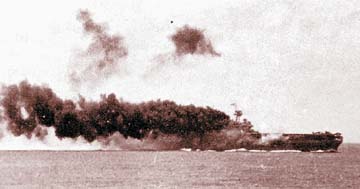
U.S. NAVY
DEAD IN THE WATER: The USS Yorktown is seen here shortly after 12:20 p.m. after being struck by dive-bombers on June 4. The carrier would also sustain hits from torpedo planes and submarines, languishing for three days until finally sinking on June 7.
THE BLUE BATTLEFIELD ON JUNE 4, 1942
In 15 minutes, U.S. forces sank 4 carriers and turned the tide of the warAs Japanese planes pounded Midway shortly after dawn on June 4, U.S. reconnaissance planes had miraculously spotted the Imperial Fleet's four carriers in the vast blue battlefield.
Gone from the tiny atoll were most of the American planes, which, unknown to the Japanese, had joined other U.S. fighters launched from three carriers that had eluded detection.
Such was not the fate of Japan. United States fighters spotted the flattops and mounted uncoordinated attacks while Japanese planes were returning to their ships. The first wave of U.S. torpedo bombers, however, were blasted from the sky without scoring a hit. But the attacks disorganized ship formations and forced Japanese fighter cover down to sea level to engage U.S. torpedo bombers, a move that allowed the Dauntless dive-bombers to swoop down on the carriers.
Within 15 minutes, beginning at 10:15 a.m., Dauntless bombers scored hits on three carriers, sinking the Kaga, Akagi and Soryu. Within these 15 minutes, the balance of power in the Pacific shifted to the United States.
The carrier Hiryu desperately retaliated and launched its fighters to find U.S. flattops. They spotted the Yorktown at noon and scored crippling bomb strikes. Two hours later, she was struck by three torpedoes. She sank June 7.
The Hiryu briefly avoided death, but the United States delivered the fatal strike at 4 p.m. Dauntless planes bombed the carrier, all but crippling her. She sank the next day when shells from her own cruisers scuttled her.
The cruisers Mikuma and Mogami collided while attempting to evade U.S. aircraft, and the Mikuma sank June 6. The U.S. destroyer Hammann was torpedoed by a Japanese submarine and sank June 6.
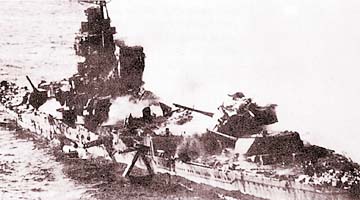
U.S. NATIONAL ARCHIVES
BURNING WRECK:The Japanese cruiser Mikuma smolders after being accidentally rammed by another Japanese cruiser and attacked by U.S. dive-bombers. The wreckage of a U.S.bomber rests on top of an aft gun turret.
The Dauntless, at left, was the perfect ship-killer WAR MACHINES IN THE SKY
The Dauntless dive-bomber was one of the most important aircraft in history. As the Navy's standard shipborne dive-bomber from 1940 to 1943, it was responsible for sinking all four Japanese carriers at Midway and was in service until the war's end. Considered obsolete by the time of Midway, it would go on to sink more enemy ships than any other aircraft in the U.S. military. It was also the only U.S. plane to fight in every major Pacific engagement. Older and slower than the Japanese Val, the Dauntless was nevertheless more rugged and steady in a dive. It was, in effect, perfectly suited for its role as a ship-killer.
Top Speed: 250 mph. Range: 1,110 miles. Armament: Two .30-caliber forward firing machine guns; twin .30-caliber machine guns for rear gunner; one 1,000- or 500-pound bomb under fuselage.
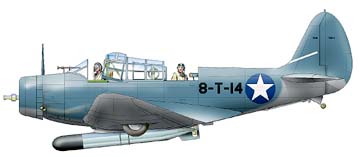
DEVASTATOR: Obsolete by 1942, the Devastator suffered huge losses to Japanese fighters at Midway.
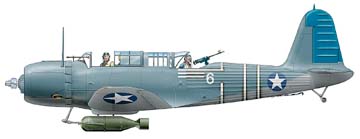
VINDICATOR: Nicknamed the "vibrator" by its crews, the outdated and slow Vindicator also suffered high losses in the battle.
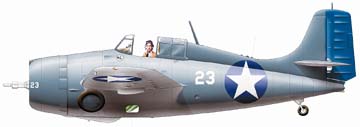
WILDCAT: Though inferior to the A6M2 Zero, the Wildcat was a remarkably rugged and effective fighter.
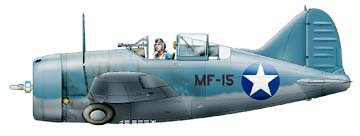
BUFFALO: The Brewster Buffalo was totally outclassed by the A6M2 Zero. Despite the courage of its pilots, the Buffalo suffered high losses in the battle.

VAL: A proven dive bomber that wreaked much damage at Pearl Harbor, the Val suffered high casualties at Midway due to poor armament.

KATE: The solid Kate sank four U.S. carriers during the war and was in service with the Japanese until 1945.

ZERO: The best carrier fighter in the world in 1942, the A6M2 was fast and highly maneuverable.
Sources: "Midway 1942, Turning Point in the Pacific," by Mark Healy; "Atlas of the Second World War," by Harper Collins; U.S Naval Historical Center; International Midway Memorial Foundation; "Douglas SBD Dauntless," by Peter Smith